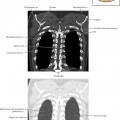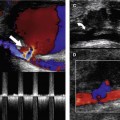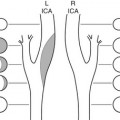Introduction
Crafting a persuasive essay in radiology or medicine can feel challenging. Many students look for write my paper for me services when they feel stuck. Still, learning the basics helps make the process smooth. A persuasive essay uses facts and opinions to sway readers toward a certain viewpoint. It might explore how certain radiology tools work or why specific medical procedures are vital for patient care.
This topic holds extra importance because doctors rely on evidence in daily practice. Strong arguments can highlight the power of research and show why advanced imaging or certain treatments help save lives. Writing about these areas gives students a chance to share their voice while backing it up with data. They can write to show why radiology plays a big role in modern healthcare or stress how certain methods improve patient well-being. A clear structure, research, and smooth language help readers follow the main points and feel convinced by the argument. This first step sets the stage for logical reasoning. It boosts interest too.
Understanding the Purpose
Before writing, it is important to know the reason for your essay. In radiology or medicine, persuasive writing can educate readers about safety measures, explain why a method works better, or argue for new practices. A writer must decide if the goal is to inform or convince on a big idea. For example, a paper might want to show how advanced imaging reduces risk. Another might highlight the need for better access to care in smaller communities.
By knowing the main cause, the writer shapes the focus. This also helps in selecting the right evidence. A medical study on X-ray safety or a set of patient surveys can strengthen arguments. Readers want key points that are easy to follow and relate to real life. If the purpose is not clear, the end result might feel weak or scattered. Setting a direct goal leads to strong writing. It keeps each point connected to the overall message and makes the reader think more deeply. This clarity builds trust in the author’s stance.
Gathering Facts and Data
Evidence stands at the heart of a persuasive essay on radiology or medicine. Writers should gather details from trustworthy sources, such as peer-reviewed journals or official data reports. These facts can range from hospital records to expert opinions on treatment choices. Having strong proof helps show the seriousness of a claim, which makes the argument more believable.
When picking facts, it is wise to look for variety. A mix of statistics, case reports, and patient stories paints a fuller picture. For instance, a statistic about how many people benefit from routine scans can work well with a personal story from a patient. This blend of numbers and real-life examples helps keep the reader engaged.
It is also good practice to credit each source properly and use recent data if possible. Medicine changes fast, so older references might not reflect modern practices. By staying current, the writer shows a commitment to accurate info. This step sets the stage for a convincing argument that readers can trust. This approach raises overall impact.
Making a Strong Outline
An outline keeps the writing process on track. It shows the flow of ideas from introduction to conclusion. In a persuasive essay on radiology or medicine, a basic structure might include a clear thesis, body paragraphs with evidence, and a final statement that ties everything together. Each section should have its main point and supporting facts listed. This way, the writer ensures no detail gets left out.
A good outline also maps where opposing points fit. If a paper argues that magnetic resonance imaging is superior, the writer should address concerns about cost or ease of use. This balance of views builds trust with the reader. It shows awareness of different perspectives while reinforcing the case for the main idea.
Outlining can save time during the writing stage. It reduces the chance of repeating facts or drifting off topic. Keeping a logical order lets readers follow the argument without confusion. By blocking out each paragraph’s purpose, the writer can stay focused, which helps produce a well-organized final essay. This method streamlines every step.
Writing and Editing Tips
Once the outline is set, the actual writing can begin. Each paragraph should start with a main idea, followed by supporting proof. Avoid long, complex sentences. Instead, pick simple wording to make the essay easy to read. In radiology or medicine, it can be tempting to use advanced terms. Yet, choosing plain language where possible helps more people understand the argument.
Use linking words to connect ideas smoothly. This prevents the writing from feeling choppy or messy. For example, words like “next” or “also” guide the reader to the next point. Keep each sentence clear and focused on the topic. Too many tangents can dilute the main point. Each paragraph must serve a purpose in supporting the thesis.
After writing, editing is key. Look at grammar, spelling, and clarity. A fresh set of eyes can catch small errors and highlight sections needing work. Reading the essay out loud helps spot awkward phrases or repeated words. Polishing the text makes it more convincing and shows a professional approach. Carefully
Conclusion
A strong conclusion ties everything together and restates the main argument. This final section should highlight the key points made throughout the essay. A paper on radiology or medicine might underline the importance of correct scans, patient care, or the value of medical research. This reminds the reader why the topic matters and how each piece of evidence supports that discussion.
Encourage your audience to think about the issue and possibly act on it. If the essay suggests a change in medical policy, the conclusion can urge officials or health leaders to consider that shift. It is also smart to revisit the thesis concisely. Show how the essay answered the main question or proved the point. This step assures the reader that the argument came full circle.
Finally, leave a memorable thought. It can be a short statement, a quote, or a simple call to action. In any case, the end should give closure. Readers should feel that the essay provided a clear, impactful viewpoint.
Stay updated, free articles. Join our Telegram channel

Full access? Get Clinical Tree






